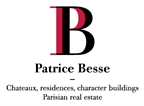Between Toulouse and the Pyrenees Mountains, in the heart of an Ariège fortified town, a 380-m² manor house, its enclosed garden and adjacent parcel o
Between Toulouse and the Pyrenees Mountains, in the heart of an Ariège fortified town, a 380-m² manor house, its enclosed garden and adjacent parcel of land.
In the Ariège Terrefort countryside nestled within the greater Occitanie region, the fortified town of Saint-Ybars lies within Toulouse's catchment area, its aeronautic industry, employment base, universities and renowned cultural institutions. Established in the 13th century, as the historical fortress church and vestiges of the town's ramparts attest, it was the first fortified village erected by Roger IV, the Count of Foix, and Pierre de Dalbs, Lord abbot of Lézat, during a tense period between the local castellanies and royal power. Today, it is a rather dynamic rural municipality, which, as part of the Lézat-sur-Lèze community, has an elementary school, middle school, shops and restaurants as well as all commodities. At the foot of the hill, there is a lake where one can cool off with a swim or enjoy the local cuisine. Foix and Saint-Girons are 35 kilometres away.
The manor house was once the property of a noble family from the region. Located on one of the main streets leading to the church square, where medieval homes, recognisable through their corbelled construction, stand side by side with later houses from the Ancien Régime, the house looks out east over the village's surrounding hills and offers a striking view of the Pyrenees Mountains. Two separate entrances provide access to the property, one on the street side, and one from the ramparts. Extending on from the two-storey house with a basement and attic, is a medieval construction connected, via a gallery, to a building that overlooks the rampart's promenade and once housed stables The two dwellings are of traditional craftsmanship, with brick and stone walls crowned with barrel tiles. Lastly, an enclosed garden ringed by the house on one side and a stone wall on the other, provides a space far from prying eyes, while a second 575-m² garden is accessible via a staircase descending the length of the ramparts.
The HouseThis is composed of a ground floor, an upstairs, a cellar and an attic. The façade, whose ornamental features are emblematic of the house's noble standing, is perfectly symmetrical. Coated with a recent plaster cladding, it provides glimpses, here and there, of a layer of terracotta brickwork, which can be found in the quoins, the stringcourse as well as on the cornice decorated with pilasters bordering a tile roof typical to the area. The windows are also framed with bricks and crowned with projecting lintels, which are characteristic of the Occitanie region; the windowsills are made of stone.
The ground floor
The main entrance opens onto a wide vestibule, staircase and hallway covered in dark antique terracotta tiles. From this entrance, the living room is accessible though a flat arch double door with moulding. As a room for entertaining, its decor is immaculate: a wide fireplace with a marble mantle whose trumeau is framed by pilasters and a frieze, a coved ceiling with crown moulding, while the lower half of its walls are decorated with moulded wainscoting. A double door provides access to the dining room, while picture windows overlooking the countryside bathe the room in light. The decoration is simple and discreet, with mitred herringbone parquet flooring. To the right, are two adjoining rooms: the first one with a fireplace could act as a summer lounge or bedroom, while the second one with a tile floor, could be used as a storage room. On the other side of the hallway, a large kitchen waiting to be fitted out has, at its centre, a long fireplace with a brick and sculpted wood mantle, whose hearth is large enough to roast meat on a spit or chestnuts.
The upstairs
From the entrance hall, a square spiral staircase provides access to the first ...


